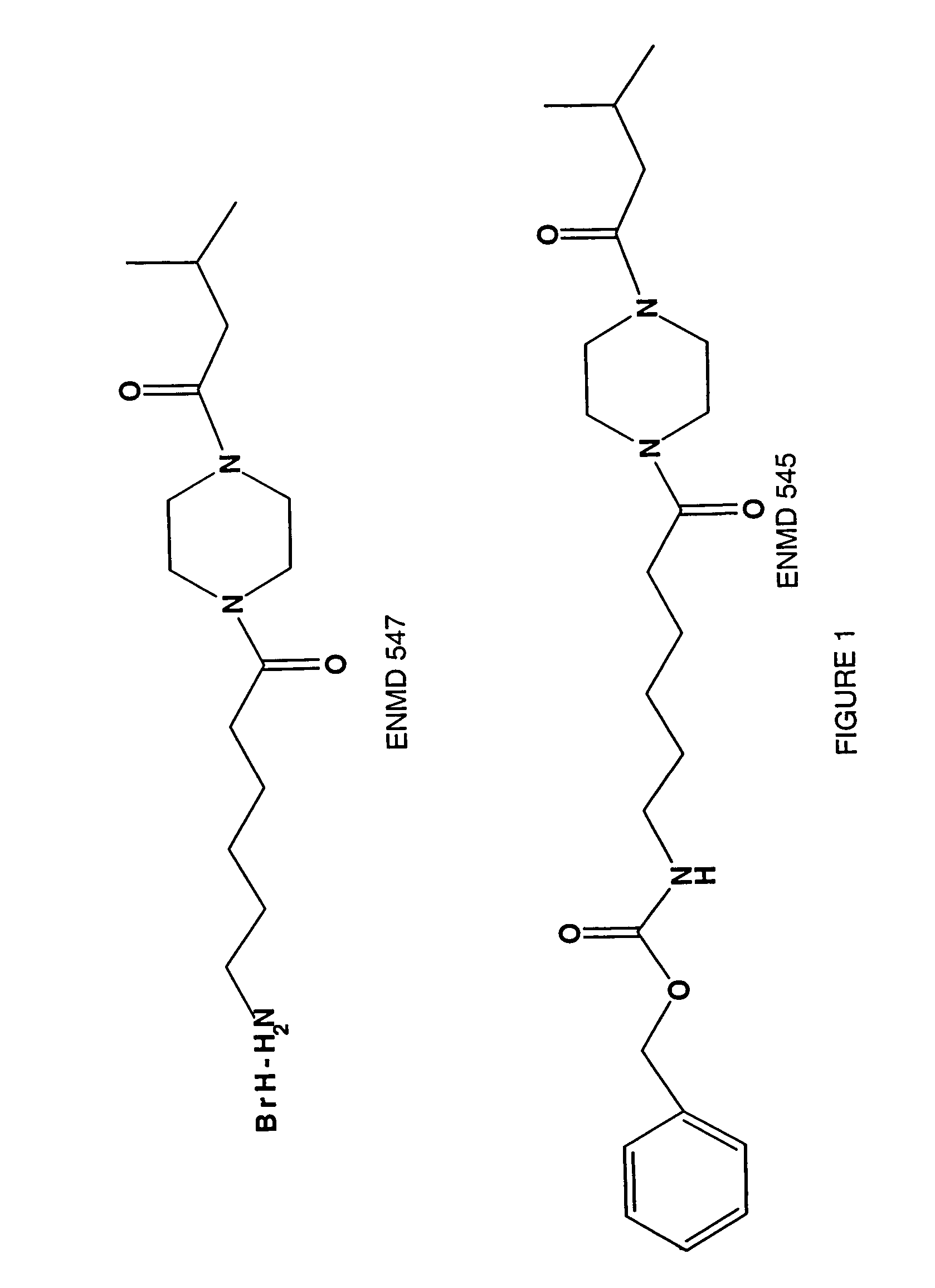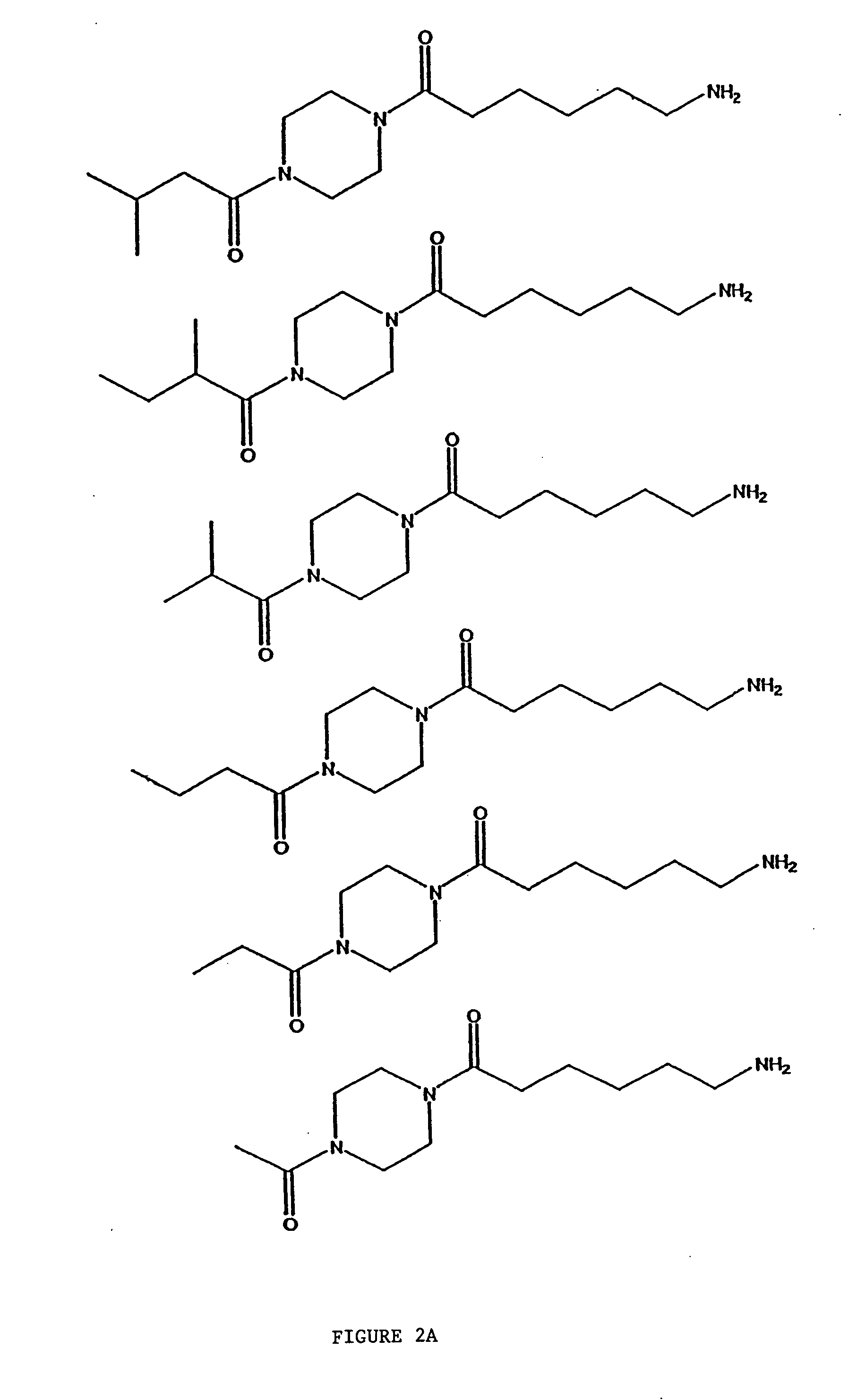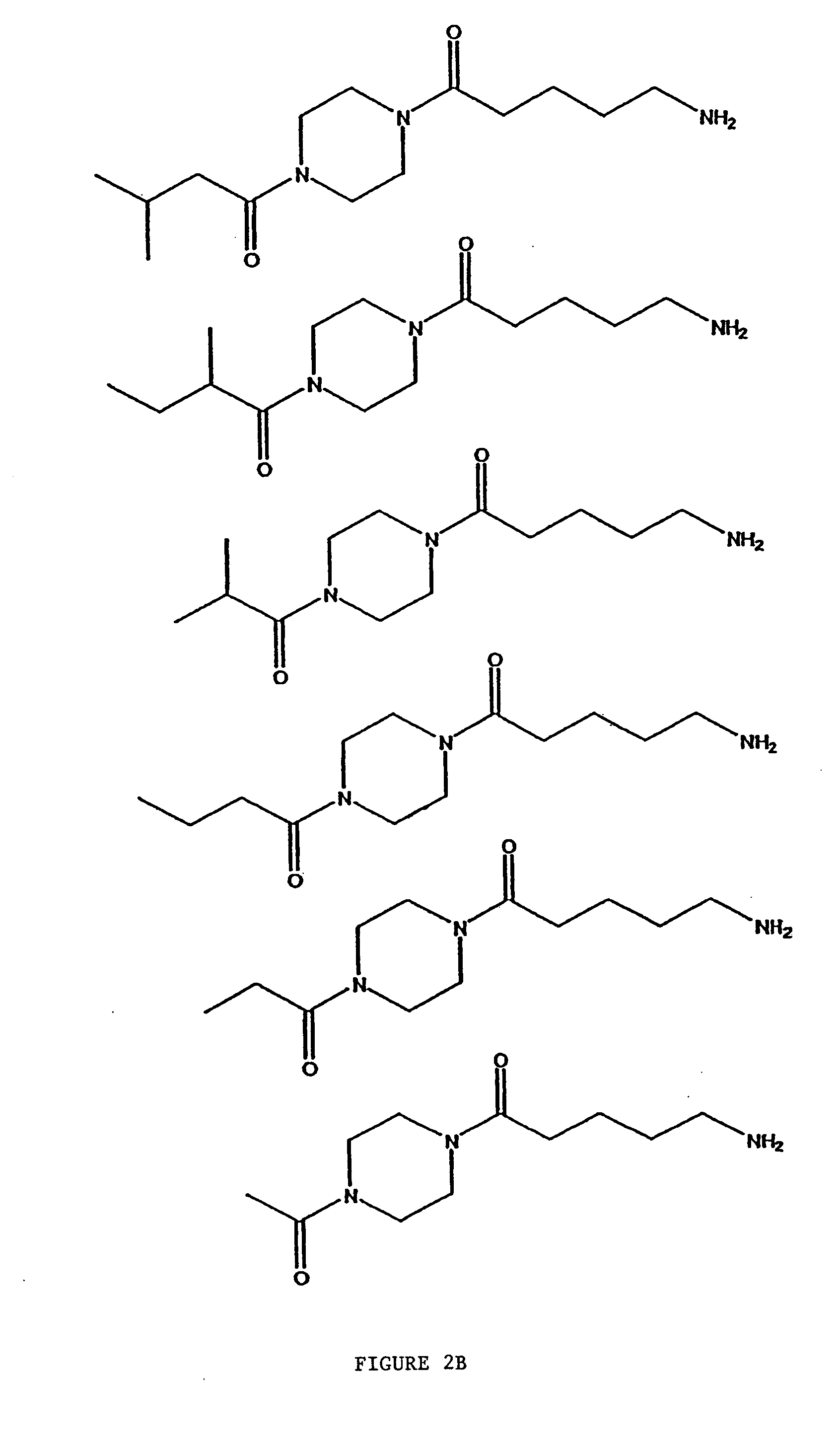Compositions and methods comprising protein activated receptor antagonists
a technology of activated receptors and antagonists, which is applied in the direction of antibacterial agents, peptide/protein ingredients, angiogenin, etc., can solve the problems of abnormal response and continue to divide in a relatively uncontrolled fashion, and achieve the effect of minimal side effects
- Summary
- Abstract
- Description
- Claims
- Application Information
AI Technical Summary
Benefits of technology
Problems solved by technology
Method used
Image
Examples
example 1
PAR Signalling Activity
[0130] Confluent HUVECs or HT29 colon carcinoma cells were loaded for 30-60 minutes with the fluorescent dye Fluo-4. Final concentration 4 uM Fluo-4, 0.02% pluronic acid in physiological buffer. Cells were then washed with assay buffer, (HBSS containing 1 mM CaCl2, 1 mM MgSO4, and 2.5 mM probenecid). Cells were stimulated with various doses of PAR-2 activating peptide, PAR-1 activating peptide or ATP. Fluorescence was monitored using a Wallac 1470 fluorescent plate reader. (See A1-ani et. al Journal of Pharmacology and Experimental Therapeutics 290:2, 753-760)
[0131] Calcium mobilization curves of the PAR-2 agonist SLIGKV (SEQ ID NO:25) compared with two truncated molecules LIGK (SEQ ID NO:1) and LIGKV (SEQ ID NO:2) are provided in FIG. 4A. Neither truncated molecule was able to induce calcium mobilization, in contrast with SLIGKV (SEQ ID NO:25), which demonstrates the typical spike of calcium release followed by degradation of signal. Similar studies were pe...
example 2
Identification and Testing of PAR-2 Antagonist
[0132] In order to assess the potential of peptides selected above to block PAR-2 signaling, cells were pretreated with potential antagonist peptides for a predetermined amount of time and were subsequently treated with P2AP. Methods and protocols used were the same as those described in Example 1. Two of the SLIGKV (SEQ ID NO:25) derived peptides demonstrated antagonist activity, LIGK (SEQ ID NO:1) and LIGKV (SEQ ID NO:2). FIG. 5 shows a representative dosing study where increasing concentrations of LIGK (SEQ ID NO:1) were used to block P2AP signaling. In this study, a concentration of 1 mM LIGK (SEQ ID NO:1) completely blocked the signaling of 100 uM SLIGKV (SEQ ID NO:25). In similar studies comparing the activity of LIGK (SEQ ID NO:1) with LIGKV (SEQ ID NO:2) it was found that the LIGK (SEQ ID NO:1) peptide is a more potent inhibitor of PAR-2 signaling (IC50<0.5 mM ), compared to LIGKV (SEQ ID NO:2) (FIG. 6).
example 3
Activation Study for Assessing Inhibitory Activity of LIGK using A TP and SFLLRN
[0133] In order to demonstrate that LIGK (SEQ ID NO:1) is a specific inhibitor of PAR-2 signaling, activation studies were performed with ATP and the PAR-1 activation peptide, SFLLRN (SEQ ID NO:34), on cells that were pretreated with LIGK. Both of these molecules signal through G-protein coupled receptors, and PAR-1 is very highly homologous to PAR-2, to the degree that the PAR-1 agonist peptide can signal through PAR-2 at high concentrations. In both cases, the PAR-2 antagonist LIGK (SEQ ID NO:1) had no inhibitory effect on signaling (FIG. 7).
PUM
| Property | Measurement | Unit |
|---|---|---|
| Pharmaceutically acceptable | aaaaa | aaaaa |
Abstract
Description
Claims
Application Information
 Login to View More
Login to View More - R&D
- Intellectual Property
- Life Sciences
- Materials
- Tech Scout
- Unparalleled Data Quality
- Higher Quality Content
- 60% Fewer Hallucinations
Browse by: Latest US Patents, China's latest patents, Technical Efficacy Thesaurus, Application Domain, Technology Topic, Popular Technical Reports.
© 2025 PatSnap. All rights reserved.Legal|Privacy policy|Modern Slavery Act Transparency Statement|Sitemap|About US| Contact US: help@patsnap.com



